The Ampere Altra Review: 2x 80 Cores Arm Server Performance Monster
by Andrei Frumusanu on December 18, 2020 6:00 AM EST- Posted in
- Servers
- Neoverse N1
- Ampere
- Altra
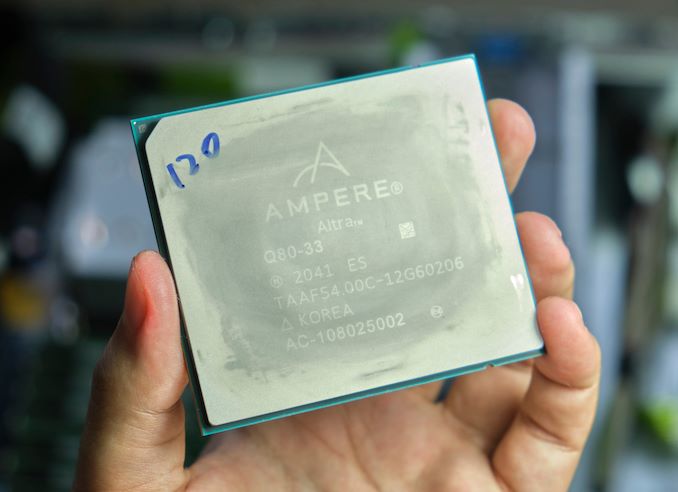
As we’re wrapping up 2020, one last large review item for the year is Ampere’s long promised new Altra Arm server processor. This year has indeed been the year where Arm servers have had a breakthrough; Arm’s new Neoverse-N1 CPU core had been the IP designer’s first true dedicated server core, promising focused performance and efficiency for the datacentre.
Earlier in the year we had the chance to test out the first Neoverse-N1 silicon in the form of Amazon’s Graviton2 inside of AWS EC2 cloud compute offering. The Graviton2 seemed like a very impressive design, but was rather conservative in its goals, and it’s also a piece of hardware that the general public cannot access outside of Amazon’s own cloud services.
Ampere Computing, founded in 2017 by former Intel president Renée James, built upon initial IP and design talent of AppliedMicro’s X-Gene CPUs, and with Arm Holdings becoming an investor in 2019, is at this moment in time the sole “true” merchant silicon vendor designing and offering up Neoverse-N1 server designs.
To date, the company has had a few products out in the form of the eMAG chips, but with rather disappointing performance figures - understandable given that those were essentially legacy products based on the old X-Gene microarchitecture.
Ampere’s new Altra product line, on the other hand is the culmination of several years of work and close collaboration with Arm – and the company first “true” product which can be viewed as Ampere pedigree.
Today, with hardware in hand, we’re finally taking a look at the very first publicly available high-performance Neoverse based Arm server hardware, designed for nothing less than maximum achievable performance, aiming to battle the best designs from Intel and AMD.
Mount Jade Server with Altra Quicksilver
Ampere has supplied us with the company’s server reference design, dubbed “Mount Jade”, a 2-socket 2U rack unit sever. The server came supplied with two Altra Q80-33 processors, Ampere’s top-of-the-line SKU with each featuring 80 cores running at up to 3.3GHz, with TDP reaching up to 250W per socket.
The server was designed with close collaboration with Wiwynn for this dual socket, and with GIGABYTE for the single socket variant, as previously hinted by the two company’s announcements of leading hyperscale deployments of the Altra platforms. The Ampere-branded Mount Jade DVT reference motherboard comes in a typical server blue colour scheme and features 2 sockets with up to 16 DIMM slots per socket, reaching up to 4TB DRAM capacity per socket, although our review unit came equipped with 256GB per socket across 8 DIMMs to fully populate the chip’s 8-channel memory controllers.
This is also our first look at Ampere’s first-generation socket design. The company doesn’t really market any particular name to the socket, but it’s a massive LGA4926 socket with a pin-count in excess of any other commercial server socket from AMD or Intel. The holding mechanism is somewhat similar to that of AMD’s SP3 system, with a holding mechanism tensioned by a 5-point screw system.
The chip itself is absolutely humongous and amongst the current publicly available processors is the biggest in the industry, out-sizing AMD’s SP3 form-factor packaging, coming in at around 77 x 66.8mm – about the same length but considerably wider than AMD’s counterparts.
Although it’s a massive chip with a huge IHS, the Mount Jade server surprised me with its cooling solution as the included 250W type cooler only made contact with about 1/4th the surface area of the heat spreader.
Ampere here doesn’t have a recessed “lip” around the IHS for the mounting bracket to hold onto the chip like on AMD or Intel systems, so the actual IHS surface is actually recessed in relation to the bracket which means you cannot have a flat surface cooler design across the whole of the chip surface.
Instead, the included 250W design cooler uses a huge vapour chamber design with a “pedestal” to make contact with the chip. Ampere explains that they’ve experimented with different designs and found that a smaller area pedestal actually worked better for heat dissipation – siphoning heat off from the actual chip die which is notably smaller than the IHS and chip package.
The cooler design is quite complex, with vertical fin stacks dissipating heat directly off the vapour chamber, with additional large horizontal fins dissipating heat from 6 U-shaped heat pipes that draw heat from the vapour chamber. It’s definitely a more complex and high-end design than what we’re used to in server coolers.
Although the Mount Jade server is definitely a very interesting piece of hardware, our focus today lies around the actual new Altra processors themselves, so let’s dive into the new Q80-33 80-core chip next.


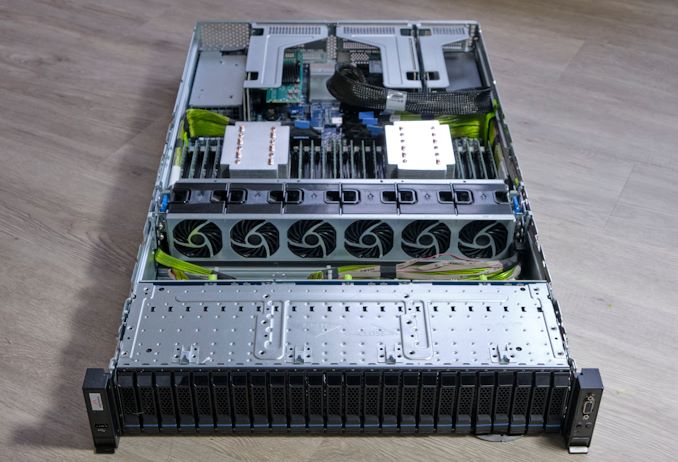
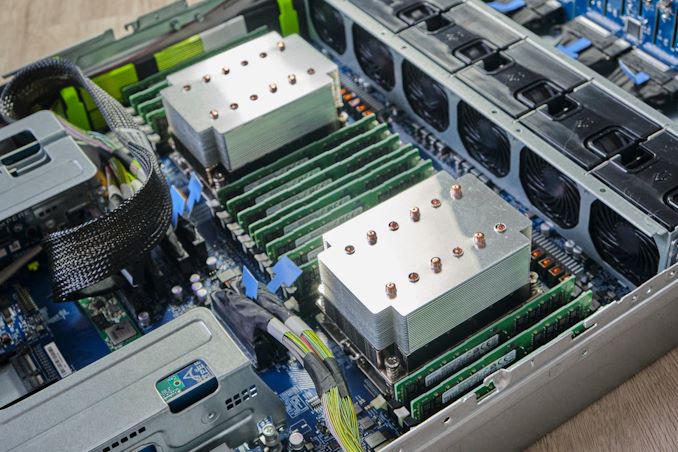
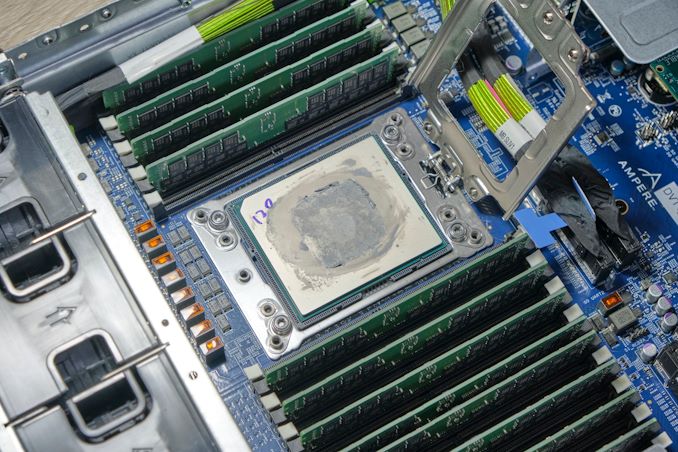
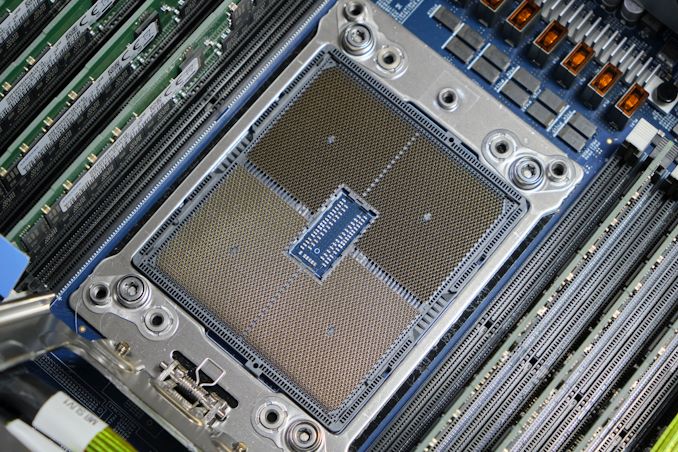
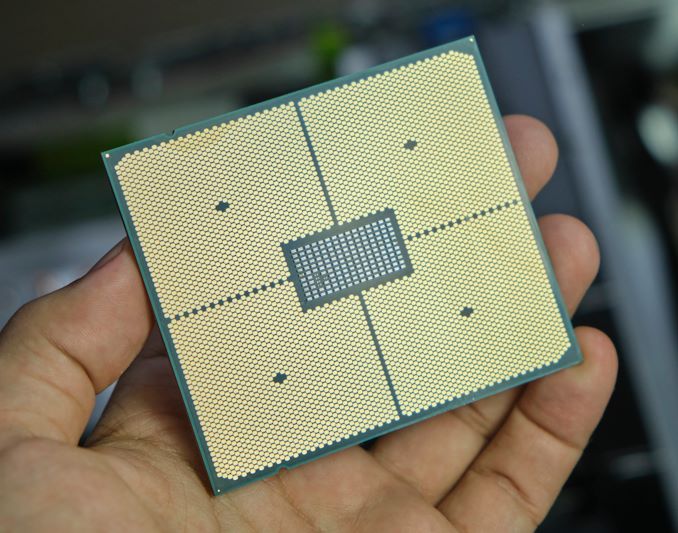

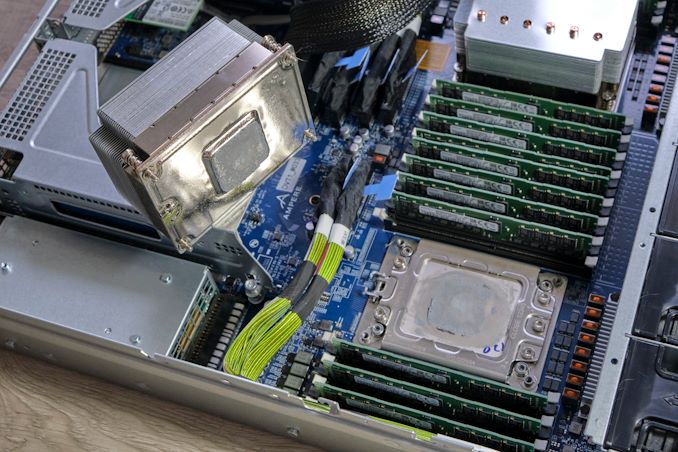
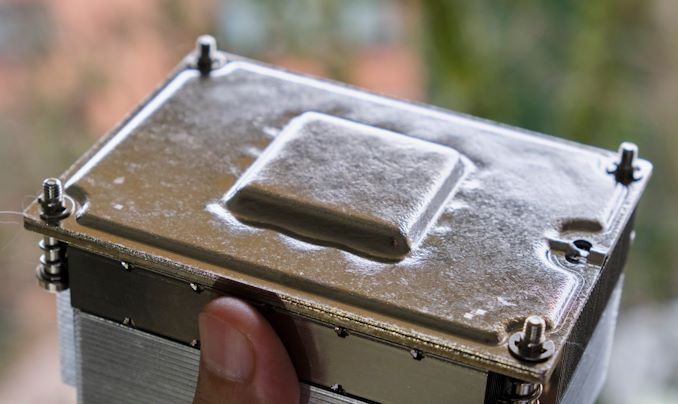
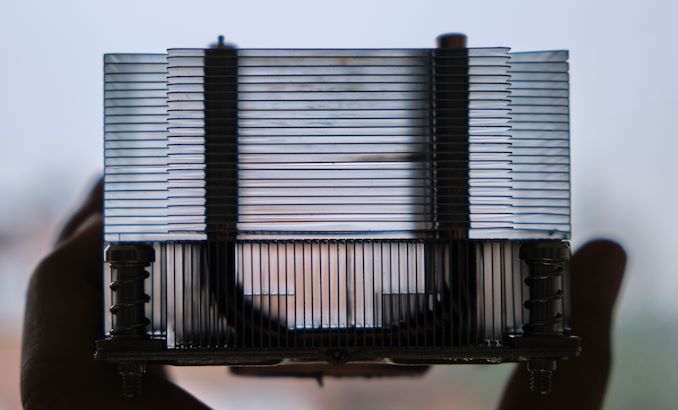








148 Comments
View All Comments
Josh128 - Friday, December 18, 2020 - link
Did you see the chip package? Its the size of an EPYC package. Im extremely doubtful its only 350mm^2.mode_13h - Sunday, December 20, 2020 - link
Look at where they show the bottom of the heatsink and it's small contact area. That shows the actual die is much smaller.Spunjji - Monday, December 21, 2020 - link
Doubt all you want - they have to put the pins for the interfaces somewhere, and that doesn't change much regardless of die size.Gondalf - Friday, December 18, 2020 - link
Obviousy it is a cpu of niche, not high volume like Intel or AMD. With a so large die we will not see many of these around. As usual only volume matter in Server worldSo no worries for X86.
eastcoast_pete - Friday, December 18, 2020 - link
Actually, those are a bigger threat to x86 than ARM chips like the M1 in Personal Computers. Server x86/x64 CPUs ist where AMD and Intel make a lot of their money. The key question for this and similar Neoverse chips is software support. If you can run your database or whatever natively on an ARM-native OS like Linux, these are tempting. Now, if MS would release Exchange Server in native for ARM, the threat would be even bigger.Gondalf - Friday, December 18, 2020 - link
Agreed about software, but i don't see problems for x86 dominance.Major sin of this design is die size, around 800mm2 looking photos in the article. On 7nm it means a very low cpu output; this issue will become even worse on 5nm.
So it is not a matter how good is a SKU but who have the real volume in server world. In past decades we have seen a lot of better cpus than x86 puppies, but in spite of this they all have lost their way.
The winner scheme is "volume". This is the only parameter that gives the dominance of a solution over another ones, expecially today with several and several millions/year of server SKUs absorbed by the market.
Altra is not born to beat x86, at least not in this crazy, old style, incarnation. They need to follow AMD (and shortly Intel) path instead of they will never be relevant.
Actual and upcoming advanced processes are not done for these massive things.
scineram - Saturday, December 19, 2020 - link
It's less than half that, you absolute retard moron.Wilco1 - Friday, December 18, 2020 - link
Apple's move to Arm does hit Intel's bottom line by many billions. A large percentage of AWS is already Graviton as more big customers are moving to it (latest is Twitter). Oracle is going to use Ampere Altra, and Microsoft is claimed to develop their own Arm servers.As Goldalf said, volume matters in the server world, and they are moving to Arm.
Spunjji - Monday, December 21, 2020 - link
I love Gondalf posts. Minimum-effort confirmation bias ramblings.eastcoast_pete - Friday, December 18, 2020 - link
That was my question also! Who fabs it, and what is their yield. This thing is quite big. Does anyone know if they overprovision cores so they can use those with small, very partial defects? At that size and those numbers of transistors, even a tiny probability of a defect can mean that the great majority of chips ends up in the circular bin (garbage).